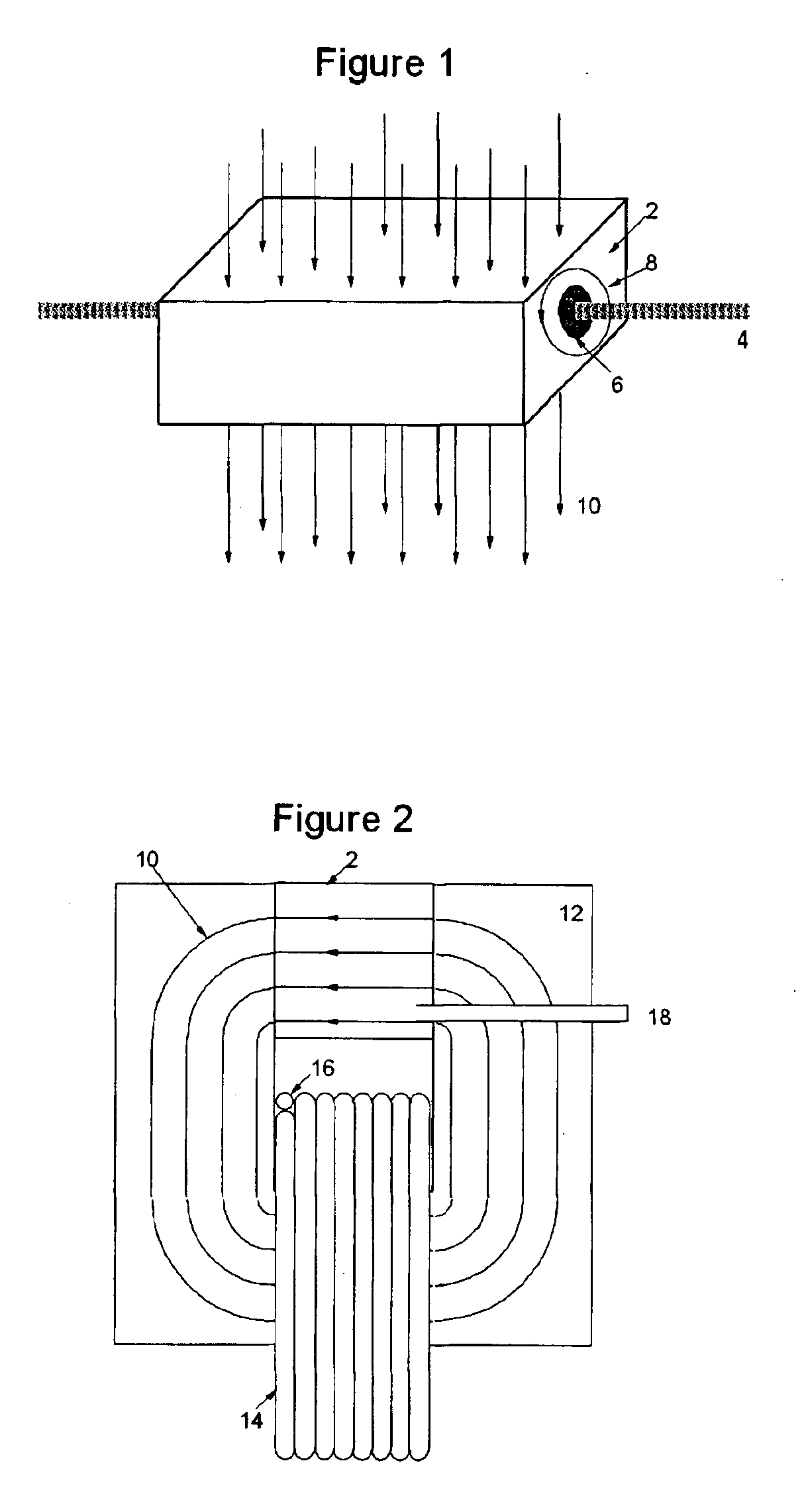Particle beam processing system
a particle beam and processing system technology, applied in the field of particle beams, can solve the problems of not showing a way to actually make and use this idea, and the charge particle also endures collisions, so as to reduce the size of the overall beam processing system, reduce the dependence of the bending angle, and reduce the cost
- Summary
- Abstract
- Description
- Claims
- Application Information
AI Technical Summary
Benefits of technology
Problems solved by technology
Method used
Image
Examples
Embodiment Construction
FIG. 1 is a schematic representation of the invention. In order to achieve a reduction in the kinetic energy of a charged particle beam 4, preferably antiprotons. The beam 4 is directed through a mass 2. This mass 2 can be composed of a variety of materials, and can be solid, liquid, gas, or a combination thereof. The mass 2 can have a solid shell to hold a liquid and / or gas. Steering of the beam 4 is accomplished by superimposing a bending magnetic field 10 through the material at a non-zero angle with respect to the trajectory of the charged particle beam 4.
The length and composition of the mass 2 is determined so as to rapidly decelerate the charged particle beam 4 to a desired output kinetic energy. The rate of deceleration can be higher than 100 MeV per centimeter by using solid uranium as the mass 2. Whereas traditional electromagnetic methods of accelerating and decelerating charged particle beams require significant power to create the electromagnetic fields, the mass 2 can ...
PUM
 Login to View More
Login to View More Abstract
Description
Claims
Application Information
 Login to View More
Login to View More - R&D
- Intellectual Property
- Life Sciences
- Materials
- Tech Scout
- Unparalleled Data Quality
- Higher Quality Content
- 60% Fewer Hallucinations
Browse by: Latest US Patents, China's latest patents, Technical Efficacy Thesaurus, Application Domain, Technology Topic, Popular Technical Reports.
© 2025 PatSnap. All rights reserved.Legal|Privacy policy|Modern Slavery Act Transparency Statement|Sitemap|About US| Contact US: help@patsnap.com



